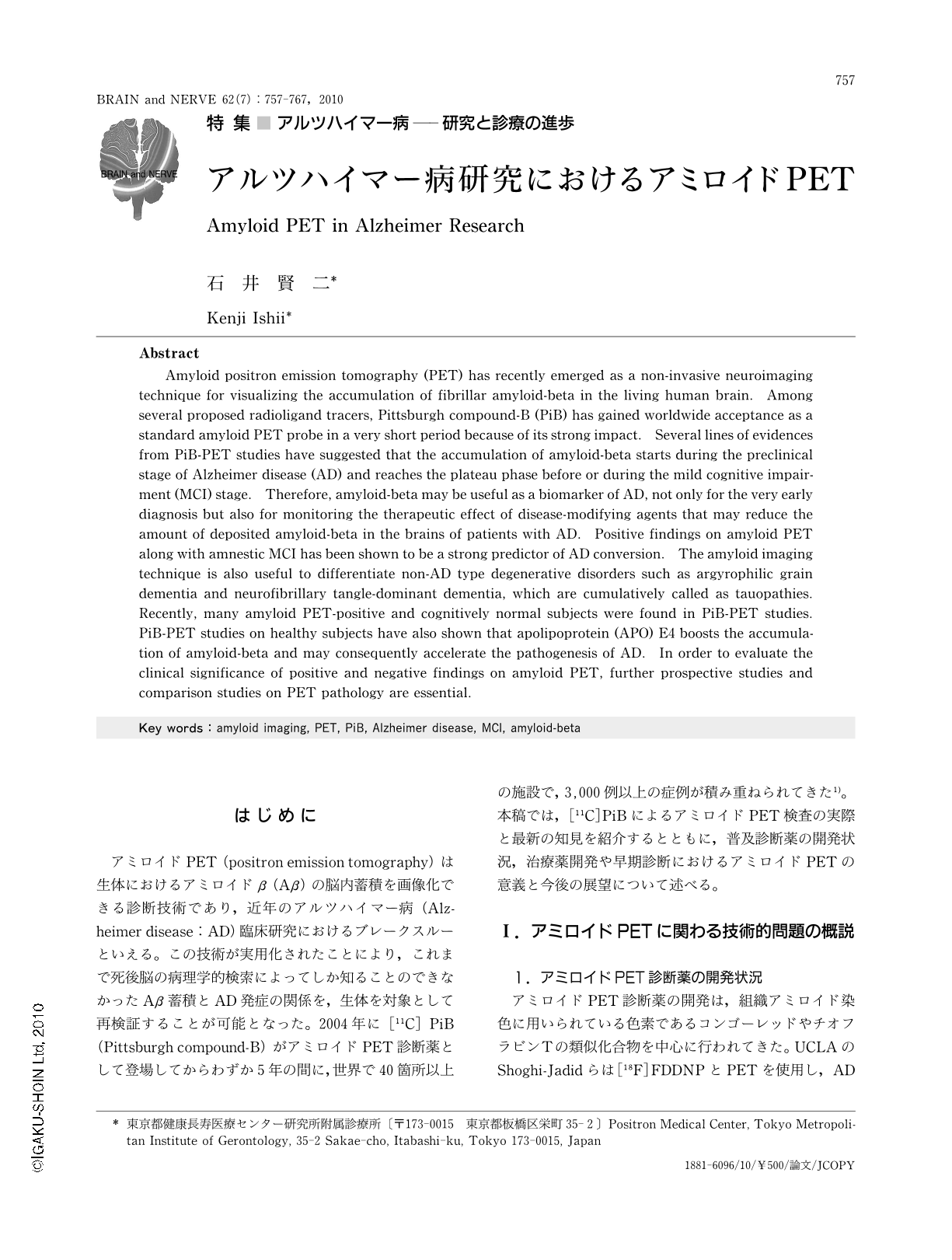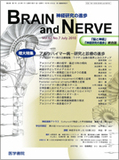Japanese
English
- 有料閲覧
- Abstract 文献概要
- 1ページ目 Look Inside
- 参考文献 Reference
はじめに
アミロイドPET(positron emission tomography)は生体におけるアミロイドβ(Aβ)の脳内蓄積を画像化できる診断技術であり,近年のアルツハイマー病(Alzheimer disease:AD)臨床研究におけるブレークスルーといえる。この技術が実用化されたことにより,これまで死後脳の病理学的検索によってしか知ることのできなかったAβ蓄積とAD発症の関係を,生体を対象として再検証することが可能となった。2004年に[11C]PiB(Pittsburgh compound-B)がアミロイドPET診断薬として登場してからわずか5年の間に,世界で40箇所以上の施設で,3,000例以上の症例が積み重ねられてきた1)。本稿では,[11C]PiBによるアミロイドPET検査の実際と最新の知見を紹介するとともに,普及診断薬の開発状況,治療薬開発や早期診断におけるアミロイドPETの意義と今後の展望について述べる。
Abstract
Amyloid positron emission tomography (PET) has recently emerged as a non-invasive neuroimaging technique for visualizing the accumulation of fibrillar amyloid-beta in the living human brain. Among several proposed radioligand tracers,Pittsburgh compound-B (PiB) has gained worldwide acceptance as a standard amyloid PET probe in a very short period because of its strong impact. Several lines of evidences from PiB-PET studies have suggested that the accumulation of amyloid-beta starts during the preclinical stage of Alzheimer disease (AD) and reaches the plateau phase before or during the mild cognitive impairment (MCI) stage. Therefore,amyloid-beta may be useful as a biomarker of AD,not only for the very early diagnosis but also for monitoring the therapeutic effect of disease-modifying agents that may reduce the amount of deposited amyloid-beta in the brains of patients with AD. Positive findings on amyloid PET along with amnestic MCI has been shown to be a strong predictor of AD conversion. The amyloid imaging technique is also useful to differentiate non-AD type degenerative disorders such as argyrophilic grain dementia and neurofibrillary tangle-dominant dementia,which are cumulatively called as tauopathies. Recently,many amyloid PET-positive and cognitively normal subjects were found in PiB-PET studies. PiB-PET studies on healthy subjects have also shown that apolipoprotein (APO) E4 boosts the accumulation of amyloid-beta and may consequently accelerate the pathogenesis of AD. In order to evaluate the clinical significance of positive and negative findings on amyloid PET,further prospective studies and comparison studies on PET pathology are essential.

Copyright © 2010, Igaku-Shoin Ltd. All rights reserved.


